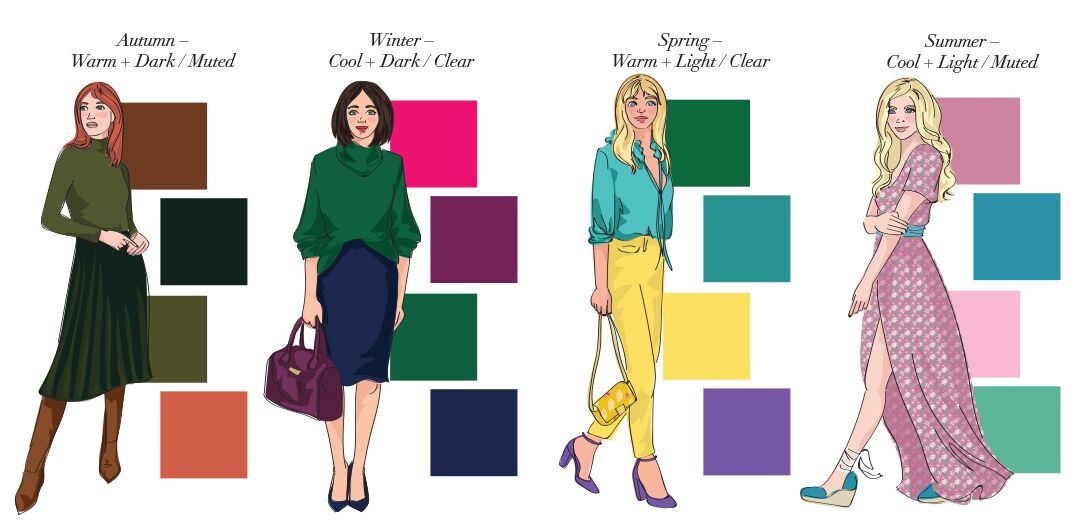
The traditional four seasons approach considers temperature, value, and intensity as either/or concepts and combines them to create four categories. Winter and Spring are bright. Summer and Fall are more muted.
Variations on value
Women can have very light coloring, medium light, mid-value, slightly dark and so on.
Variations in Intensity
The same kind of continuum exists for personal color intensity
COLORING CHANGES WITH AGE
As you mature, pigmentation diminishes and the colors of your skin, hair and eyes all soften. That reduces your color value and intensity.
Do you need a professional Color Analysis?
A professional color analysis is one of the best investments you can make in your wardrobe.
Why do a Consult?
- You’ve never been analyzed before
- Your previous four-season swatches don’t seem to fit as well as they used to
- Those old swatches are lying unused in a drawer
- You have had a significant change in coloring (especially hair coloring) since your previous consultation
- It’s been more than 10 years since your previous analysis
Try out Colors and Prints from your Current Wardrobe
Your color analysis is only worth its cost if you USE it to develop a more flattering versatile wardrobe
Purge items that are polar opposite wrong colors especially if the items have other problems like poor fit or obvious wear and tear.
Resolve to make all new wardrobe purchases in your best colors.
Items worn near your face matter the most. If a suit is a less optimal color, try adding a blouse in your best shade. If your dress is the wrong color, wear a scarf or necklace in a flattering color.
ADVANCING/RECEDING COLORS
- Color placement can dramatically affect visual body proportions.
- Color placement can give you the illusion of a more balanced figure. Areas of lighter color enlarge and draw attention; areas of darker color minimize.
- It is important to understand that advancing/receding color is a relative concept. You can’t wear head to toe black and automatically look like a size 2. But within and fashion color scheme, you can position the more receding color to make the area it covers appear relatively smaller. In fact, the very same color can either advance or recede, depending on the color it’s combined with.

